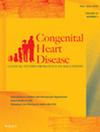一种新的三维(3D)印前算法用于模拟先天性心脏病计划手术
IF 1.2
4区 医学
Q4 CARDIAC & CARDIOVASCULAR SYSTEMS
引用次数: 0
摘要
背景:三维打印技术可能成为改变临床实践和显著改善治疗效果的关键因素。将这项技术引入小儿心脏外科,将使我们能够研究缺陷的解剖特征和空间关系,并在每个病例的打印模型上模拟最佳的手术修复。方法:对29例先天性心脏缺陷患儿进行前瞻性队列研究。心脏和大血管被建模并打印出来。在多层计算机断层扫描图像(第一组)和打印的心脏3D模型(第二组)上,在相同的平面和点上测量相同的心脏区域。根据新开发的算法对多层计算机断层扫描数据和3D模型制备进行预打印处理。结果:3d打印心脏模型的测量结果与断层扫描图像没有明显差异,这使我们得出结论,模型是高度准确和信息丰富的。新算法极大地简化和加快了3D模型的打印准备,同时保持了高精度和细节水平。结论:3d打印模型在每个病例中提供了对缺陷解剖结构的准确术前评估。与其他可用的程序相比,新算法有几个重要的优点。它们能够为每种特定复杂先天性心脏病的手术修复制定定制的初步计划,预测可能出现的问题,确定最佳手术策略,并显著改善手术结果。本文章由计算机程序翻译,如有差异,请以英文原文为准。
A New Three-Dimensional (3D) Printing Prepress Algorithm for Simulation of Planned Surgery for Congenital Heart Disease
Background: Three-dimensional printing technology may become a key factor in transforming clinical practice and in significant improvement of treatment outcomes. The introduction of this technique into pediatric cardiac surgery will allow us to study features of the anatomy and spatial relations of a defect and to simulate the optimal surgical repair on a printed model in every individual case. Methods: We performed the prospective cohort study which included 29 children with congenital heart defects. The hearts and the great vessels were modeled and printed out. Measurements of the same cardiac areas were taken in the same planes and points at multislice computed tomography images (group 1) and on printed 3D models of the hearts (group 2). Pre-printing treatment of the multislice computed tomography data and 3D model preparation were performed according to a newly developed algorithm. Results: The measurements taken on the 3D-printed cardiac models and the tomographic images did not differ significantly, which allowed us to conclude that the models were highly accurate and informative. The new algorithm greatly simplifies and speeds up the preparation of a 3D model for printing, while maintaining high accuracy and level of detail. Conclusions: The 3D-printed models provide an accurate preoperative assessment of the anatomy of a defect in each case. The new algorithm has several important advantages over other available programs. They enable the development of customized preliminary plans for surgical repair of each specific complex congenital heart disease, predict possible issues, determine the optimal surgical tactics, and significantly improve surgical outcomes.
求助全文
通过发布文献求助,成功后即可免费获取论文全文。
去求助
来源期刊

Congenital Heart Disease
CARDIAC & CARDIOVASCULAR SYSTEMS-
CiteScore
0.40
自引率
33.30%
发文量
37
审稿时长
6-12 weeks
期刊介绍:
Congenital Heart Disease is an open-access journal focusing on congenital heart disease in children and adults. Though the number of infants born with heart disease each year is relatively small (approximately 1% of the population), advances in treating such malformations have led to increased life spans for this population. Consequently, today most patients treated for congenital heart disease are over the age of 20. What are the special needs of adults with congenital heart disease? What are the latest developments in the care of the fetus, infants, and children? Who should treat these patients? How should they be treated?
Congenital Heart Disease focuses on these questions and more. Conceived as a forum for the most up-to-date information on congenital heart disease, the journal is led by Editor-in-Chief Vladimiro L. Vida, MD, Ph.D., Professor in Cardiac Surgery, University of Padua in Italy, as well as an international editorial board. Congenital Heart Disease publishes articles on heart disease as it relates to the following areas:
• Basic research of congenital heart disease
• Clinical pediatric and adult cardiology
• Cardiac imaging
• Preventive cardiology
• Diagnostic and interventional cardiac catheterization
• Electrophysiology
• Surgery
• Long-term follow-up, particularly as it relates to older children and adult congenital heart disease
• Exercise and exercise physiology in the congenital patient
• Post-op and critical care
• Common disorders such as syncope, chest pain, murmurs, as well as acquired disorders such as Kawasaki syndrome
The journal includes clinical studies, invited editorials, state-of-the-art reviews, case reports, articles focusing on the history and development of congenital heart disease, and CME material. Occasional issues focus on special topics.
Readership: Congenital Heart Disease was created for pediatric cardiologists; adult cardiologists who care for patients with congenital heart disease; pediatric and pediatric cardiology nurses; surgeons; radiologists; anesthesiologists; critical care physicians and nurses; and adult support staff involved in the care of patients with congenital heart disease.
 求助内容:
求助内容: 应助结果提醒方式:
应助结果提醒方式:


